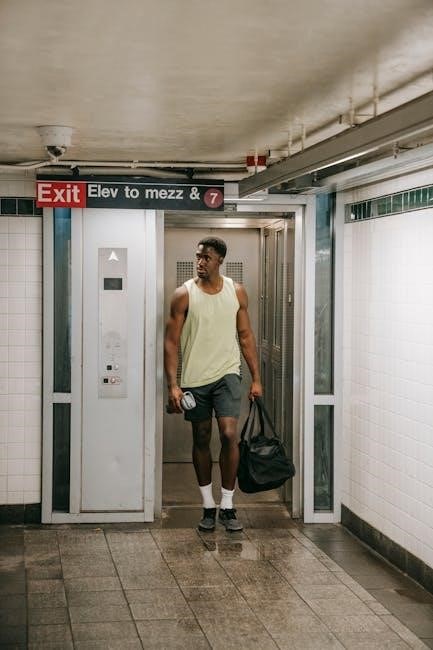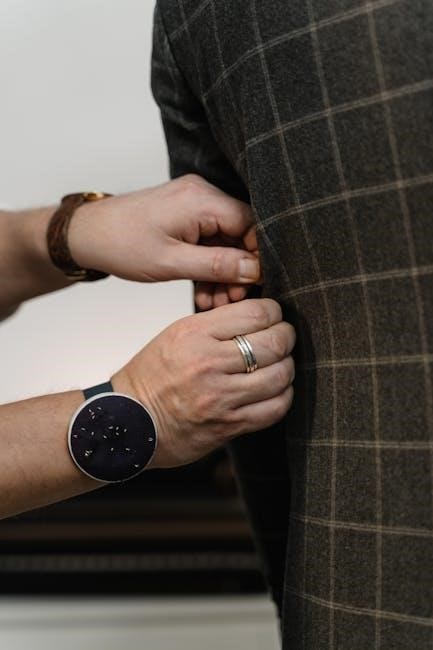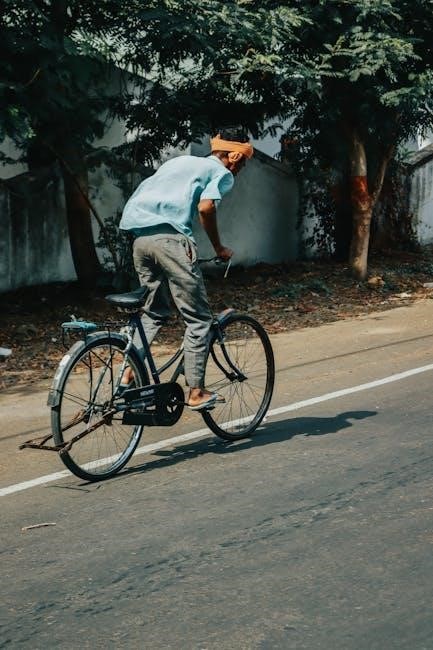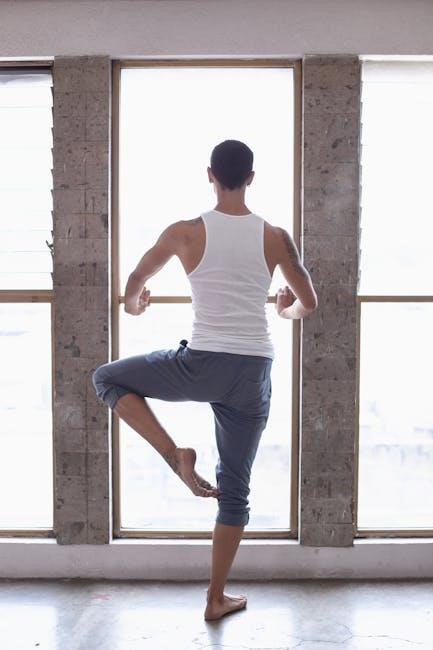men’s pants fit guide

A well-fitted pair of pants is essential for both style and comfort. This guide helps men understand the key elements of a perfect fit, ensuring confidence and practicality in their wardrobe choices.

1.1 Why Pants Fit Matters

Pants fit is crucial for both style and comfort, impacting how you look and feel. Ill-fitting pants can ruin an outfit and cause discomfort, while a well-tailored pair enhances confidence. Proper fit ensures freedom of movement and avoids distractions like tight waistbands or sagging fabric. It also reflects attention to detail, signaling a polished wardrobe. A good fit elevates your appearance, making you look sharper and more put-together. Investing in the right fit is essential for creating a wardrobe that combines functionality with timeless style.
1.2 Key Elements of a Perfect Fit
A perfect fit in men’s pants involves several key elements. The waist should sit comfortably without gaping or digging in. The inseam should match your leg length, avoiding excess fabric. The seat and thigh should provide a balanced fit, neither too tight nor too loose. Proper rise—whether high, medium, or low—ensures comfort and style alignment. Fabric quality and stretch also play a crucial role in comfort and movement. Lastly, the fit should complement your body type, ensuring a flattering silhouette. These elements together create a harmonious blend of style, comfort, and functionality.

Understanding Pants Measurements
Accurate measurements are key to a perfect fit. Waist, inseam, and seat measurements ensure pants fit comfortably and look great. Proper sizing enhances comfort and style.
2.1 How to Measure Your Waist
To measure your waist accurately, locate your natural waistline, typically just above the hipbone and below the ribcage. Use a flexible tape measure, ensuring it’s level and not too tight or loose. Stand upright and relaxed, with feet shoulder-width apart. The tape should wrap snugly around your torso, avoiding any pressure. This measurement is crucial for determining the ideal pants size, ensuring a comfortable fit without restriction. Proper waist measurement is the foundation for a well-fitted pair of pants that flatter your body shape and enhance your style.
2.2 How to Measure Your Inseam
Your inseam is the length of your pants from the crotch to the bottom of the leg. To measure it, wear slim-fit pants and use a flexible tape measure. Start at the crotch seam, where the inseam begins, and extend the tape down to your ankle bone. Ensure the tape is snug but not tight, and keep your legs straight. This measurement determines the pant length, ensuring the hem sits correctly above your shoes. Accurate inseam measurement is vital for a balanced, polished look in your trousers or jeans.

2.3 How to Measure Your Seat
Your seat measurement refers to the width of your hips, typically measured around the widest point. Stand upright and wrap a flexible tape measure around your natural hip line, usually 7-9 inches below your waistline. Ensure the tape is level and not too tight or loose. This measurement helps determine how the back of the pants will fit, ensuring comfort and a flattering silhouette. Accurate seat measurement is crucial for avoiding baggy or restrictive fabric in the hip area, ensuring a balanced and comfortable fit in your trousers or jeans.
Pants Rise Types
Pants rise refers to the distance from the waistband to the crotch seam, influencing both comfort and style. It impacts how pants sit on the body, affecting proportions and overall fit. Higher rises can elongate legs, while lower rises emphasize the upper body. Understanding rise types helps men choose pants that align with their personal style and body type, ensuring a balanced and flattering appearance.
3.1 High-Rise Pants
High-rise pants are designed with a longer rise, sitting above the natural waistline. They provide excellent coverage and support, often flattering taller men or those with longer torsos. These pants can create a more streamlined appearance, elongating the legs and balancing proportions. High-rise styles are versatile, suitable for both formal and casual settings, and are particularly favored for their ability to enhance posture and create a polished look. They are also known for their comfort, as they stay securely in place throughout the day.
3.2 Medium-Rise Pants
Medium-rise pants offer a balanced fit, sitting just below the natural waistline but above the hips. This style is versatile and flattering for most body types, providing both comfort and a modern aesthetic. Medium-rise pants are ideal for men seeking a timeless look, as they avoid the extremes of high-rise or low-rise styles. They are particularly suited for average builds, offering a streamlined appearance without sacrificing mobility. This rise is also a great option for taller men or those with larger builds, as it creates a proportional silhouette.
3.3 Low-Rise Pants
Low-rise pants are designed to sit significantly below the natural waistline, often resting just above or around the hips. This style is popular in contemporary fashion and can create a longer, more streamlined appearance for the legs. Low-rise pants are ideal for men who prefer a modern, trendy look. However, they may not be the most flattering choice for those with shorter torsos, as they can create a disproportionate silhouette. The fit should be tailored to avoid being overly tight in the thighs while maintaining a sleek, fashionable appeal.

Pants Fabric and Comfort
Fabric choice significantly impacts both comfort and durability. Cotton, wool, and synthetic blends are popular options, each offering unique benefits. Stretch fabrics enhance mobility, while breathable materials ensure all-day comfort.
4.1 Choosing the Right Fabric for Your Needs
Selecting the right fabric is crucial for comfort and durability. Cotton offers breathability and softness, ideal for casual wear. Wool provides warmth and a sophisticated look, perfect for formal settings. Synthetic blends, like polyester, are durable and wrinkle-resistant, making them great for travel. Stretch fabrics, such as elastane-infused materials, enhance flexibility, ideal for active lifestyles. Consider your lifestyle, season, and personal preferences when choosing fabric to ensure optimal comfort and functionality.
4.2 The Role of Stretch in Pants Fit
Stretch fabrics, such as those with elastane, provide enhanced flexibility and comfort. They allow for a full range of motion while maintaining a tailored appearance. Stretch pants are ideal for active lifestyles, as they adapt to the body’s movements without restricting mobility. Additionally, they help pants retain their shape throughout the day, preventing sagging or discomfort. This feature is particularly beneficial for athletic builds or those who prioritize comfort without compromising on style, making stretch a versatile choice for various occasions and activities.
Pants Fit for Different Body Types

Understanding your body type is crucial for selecting pants that flatter your physique. Whether slim, athletic, or larger, the right fit enhances comfort and confidence effortlessly.
5.1 Pants Fit for Slim Builds
For slim builds, pants should create a balanced silhouette without appearing overly tight. Slim-fit or tailored styles in stretch fabrics offer comfort and a streamlined look. Ensure the waist sits naturally, avoiding excess fabric. The inseam should break slightly, preventing a too-short appearance. Fabrics with subtle texture can add depth, while neutral colors elongate the legs; Proper tailoring ensures the pants skim the body, enhancing a lean frame without restriction. This approach maintains both style and comfort for everyday wear.
5.2 Pants Fit for Athletic Builds
Athletic builds require pants that accommodate muscular legs and a broader waist. Look for styles with a slightly roomier thigh area to avoid restriction. High-waisted pants can provide better support and balance proportions. Stretch fabrics are ideal, offering flexibility and comfort during movement. Ensure the inseam is proportional to your height, avoiding pants that are too short or too long. Straight-leg or tapered cuts can create a balanced silhouette, while subtle textures or patterns add visual interest without overwhelming the frame. Proper fit enhances both functionality and style for active lifestyles.
5.3 Pants Fit for Larger Builds
For larger builds, comfort and support are key. Opt for high-waisted pants to help distribute waist pressure and improve posture. Straight-leg or relaxed-fit styles provide room in the thighs without feeling overly loose. Stretch fabrics enhance flexibility and comfort, while avoiding clingy materials that accentuate size. Ensure the inseam is proportional to your height for a balanced look. Avoid overly tight fits, as they can restrict movement, and steer clear of excessively loose styles that may appear bulky. Quality and fit are crucial for confidence and style in larger builds.

Common Pants Fit Mistakes to Avoid
- Ill-fitting waistlines that are too tight or too loose.
- Ignoring fabric quality, which impacts comfort and durability.
- Not considering inseam length, affecting overall proportions.
6.1 Pants That Are Too Tight or Too Loose
Pants that are too tight can restrict movement and cause discomfort, while overly loose pants may look unflattering. A proper fit should allow freedom of movement without sagging or bunching.
6.2 Ignoring the Importance of Fabric Quality
Fabric quality directly impacts comfort and durability. Poor-quality fabrics can cause discomfort, lack breathability, or wear out quickly. Prioritizing style over fabric can lead to dissatisfaction. Always consider fabric type, weave, and finish to ensure pants meet your needs.
Achieving the perfect fit in men’s pants combines style, comfort, and confidence. By understanding measurements, fabric, and body type, you can elevate your wardrobe and everyday comfort effortlessly.

7.1 Final Tips for Achieving the Perfect Fit
Invest in a good tailor to ensure pants fit perfectly to your body. Pay attention to fabric quality for comfort and durability. Try pants on in the afternoon for the most accurate sizing, as bodies can swell slightly throughout the day. Balance style with practicality, ensuring the fit complements your body type and personal comfort. Remember, confidence shines when clothes fit well. By combining these tips, you’ll elevate your wardrobe and enjoy a seamless, stylish experience.



Leave a Reply
You must be logged in to post a comment.